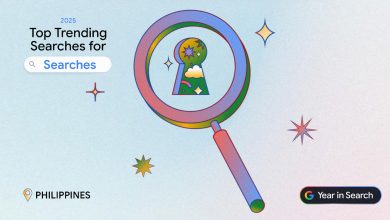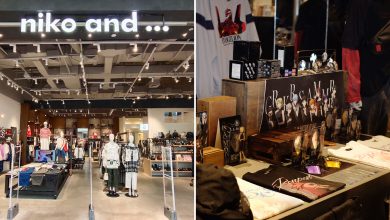MANILA, PHILIPPINES — Can science create art? This heady question and more were tackled at the first GrabAds CMO Circle in the Philippines, held on February 28, 2024 at Manila House, Bonifacio Global City. In a room filled with some of the country’s most brilliant marketing minds, the answers that came to light were both enlightening and inspiring.
The GrabAds CMO Circle is a fireside chat with top marketing executives on the industry’s hottest topics. Presented by GrabAds and produced in partnership with adobo Magazine, the Philippines’ first edition of the CMO Circle featured a rousing conversation between Grab’s Group Head of Marketing and Sustainability Cheryl Goh; Jollibee Foods Corporation’s Global Chief Marketing Officer & Head of Digital Marketing David Beal; and Unilever’s Beauty & Well-Being Digital Marketing, Media & dCommerce Lead Dennis Perez. Grab’s Head of GrabAds and Brand Insights Ken Mandel moderated their discussion on the topic, “Changing Art and Science of Brand Building.”





After adobo Magazine Founder, President, and Editor-in-Chief Angel Guerrero opened the event, Grab Philippines Managing Director Grace Vera Cruz welcomed the esteemed guests, thanking them for joining what would be an evening of remarkable insights and valued connections.
Grab’s Regional Head of Marketing & Brand Sulin Lau set the tone for the night’s conversations with her keynote talk on whether marketing was more about math or magic – or, in her own opinion, both. By using the math of GrabAds’ immense amounts of data and insights to create emotionally resonant campaigns, she asserts, brands can create magic for their target markets.


With guests’ minds buzzing with inspiration from Sulin’s talk, Ken, Cheryl, David, and Dennis took to the stage for the evening’s main event, tackling questions on the intersection between data and art, on AI’s role in the marketing landscape, and on the significant changes we’ve seen in the marketing landscape over the past few decades.
On the latter, Dennis provoked a lot of thought with his assertion that we have seen the collapse of the marketing funnel.
“The funnel was actually invented by a guy named Elmo Lewis in 1898,” he explained. “If you’re basing your marketing principles from something in 1898, then I would say, I don’t know, for me personally? That’s very, very dated.”
“What’s happening right now is it’s just technically flattening, with information, content, decision-making now happening at the speed of light – or should I say, speed of byte?” he continued.
“Suddenly, this convergence of what we call upper funnel, lower funnel just becomes singular, right? And now with a flattened funnel, you can basically create brands, at the same time, convert. Or you can actually use a conversion platform and still build brands.”
Ken concurred, adding that this new flattened funnel, as enabled by modern technology and data science, can also contribute to the development of ads that are more meaningful to a brand’s audience.
“So then [audiences] move through that whole marketing funnel very quickly, and it’s technology that’s accelerating consumer discovery, awareness, and ultimately purchase,” he said. “So we can get the right ad in front of you at the right time, that is, to the point where an advertisement is no longer an ad; it’s content. And it’s useful content.”







Cheryl shared her views on how AI can certainly speed up our creative processes as marketers – particularly in the area of asset creationmarket research – but emphasized it can’t actually replace human creativity.
“What technology has done is simplify many, many things, including making it possible to generate copy and images faster and making them perform better from a conversion standpoint,” she said. “It’s just making what humans can do far more efficient, faster and better but it cannot yet start an entire creative process,” she continued.
She also added: “When we are able to use data in very interesting ways and then infuse that with storytelling, with novel ways of displaying it, we can really make the consumer experience far more engaging.”
Cheryl highlighted GrabFood’s “Year-End Cravings” recap, where users were shown an entertaining summary of their food delivery activity for 2023, as an example of how the creative use of data delighted users, making their engagement with the Grab brand a lot more fun. More importantly, brands can also use this data to create customized experiences for users by working with GrabAds.
“What we’ve definitely done is infuse data to make the brand experience far more personalized and far more interesting and relevant,” she said.
For David, data-driven strategies like these all tie back to the very core of marketing: understanding humans. Despite the immense changes modern technology has brought to the marketing industry, and for all the sophistication that data science brings to the table, the one thing that’s stayed consistent throughout the history of marketing is people.
“The way we interact with people, or the core motivations for the vast majority of the human race have been pretty darn consistent for a very long time,” he pointed out. “And so as marketers, our job is to not only understand that, but more importantly, to acknowledge that as a starting point for anything we do, it’s easy.”
“It’s easy sometimes to fall into a narrative where all of the newness that exists around us, it’s easy sometimes to think that that means that fundamentally the game has changed.”
“I would argue that when we have so much change, and when we have so many new perspectives visible, it reinforces my belief that fundamentally, the role that we play as marketers is even more simple than it has been in the past,” he concluded.
So can science create art? According to the inspiring speakers who graced the GrabAds CMO Circle stage, brands who are at the top of their marketing game are already proving that it’s possible. Technologies like AI and big data provide the foundation for gathering countless insights about who we really are as people; the trick to creating magic from the math is finding ways to add the human touch to all those figures.

















